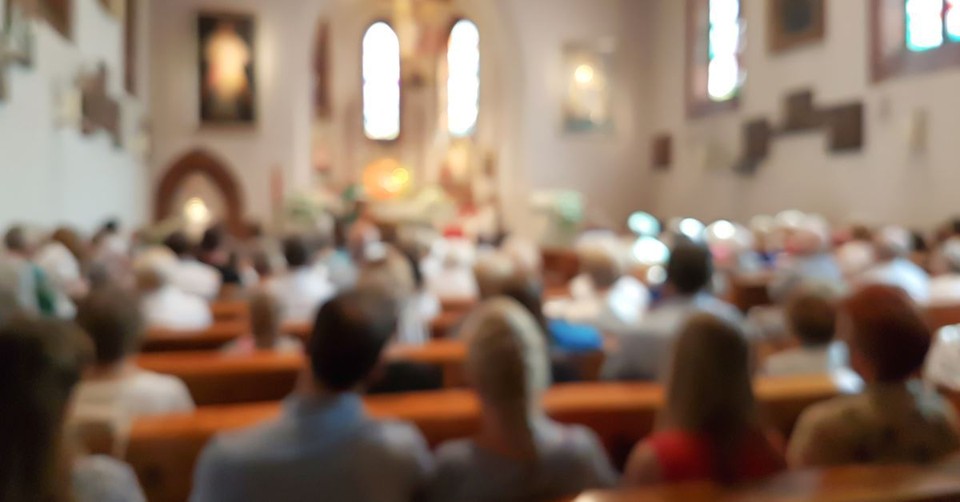3 Ways the Liturgical Calendar Can Shape Christian Discipleship

Laurence Hull Stookey, author of Calendar: Christ’s Time for the Church, called the Church Year, “living at the intersection of time and eternity.” I like that. I want to explore the ancient Christian practice of marking time according to the life of our Lord Jesus. But first, let us consider the central matter of time. Time is a finite and perishable resource. As I write and as you read; more of it has irretrievably slipped away. The illustrious J.R.R. Tolkien wrote in Lord of the Rings about the essence of time:
“'I wish it need not have happened in my time,' said Frodo.
'So do I,' said Gandalf, 'and so do all who live to see such times. But that is not for them to decide. All we have to decide is what to do with the time that is given us.'”
Understanding Time as a Gift
Time is a gift; a precious gift that cannot be exchanged if it doesn't suit us. By saying that time is a gift we are admitting that time is not a commodity. A commodity is nothing special, something that is always in abundance. But time is limited and thus of inestimable value. A wise person might use just a bit of this invaluable gift for introspection. Indeed, a prudent person will recognize that an investment of time to ask one's self an essential question might not buy time but help to spend it with profound dividends. That question is one that I ask you now: "How are you using time?"
We would do well to answer that question in the essential categories of our lives. "How am I stewarding time as a person?" "How am I managing the gift of time as a husband? A father?" But my concern in this essay is about the time of your life as a disciple of Jesus Christ. Every disciple of Jesus of Nazareth must follow Him in the time that is given us. To faithfully steward time is, of course, a biblical virtue repeatedly urged. So the wise Solomon observed:
"For everything, there is a season, and a time for every matter under heaven" (Eccl. 3:1 ESV).
So, also, the Apostle Paul warned in several places:
"See then that you walk circumspectly, not as fools but as wise, redeeming the time because the days are evil" (Ephesians 5:15-16 NKJV); and
"One person considers one day more sacred than another; another considers every day alike. Each of them should be fully convinced in their own mind. Whoever regards one day as special does so to the Lord. Whoever eats meat does so to the Lord, for they give thanks to God; and whoever abstains does so to the Lord and gives thanks to God. For none of us lives for ourselves alone, and none of us dies for ourselves alone. If we live, we live for the Lord; and if we die, we die for the Lord. So, whether we live or die, we belong to the Lord" (Romans, 14:5-8).
Perhaps, then, we should use a different word to describe the essence of time.
Understanding Time as Discipleship
A biblical model for redeeming time is ordering our days around God's redemptive activity in history. Forgetting God and His redeeming work leads to pride and pride to pathology and pathology to perversion and perversion to pain.1 Ordering our time according to the Church Year, or as it is also called the Liturgical Calendar (from liturgia, the work of the laos, of the People), is edifying and helpful.
In the Old Testament, God commanded festivals to be instituted and followed by His people. The principal festivals were Pentecost, Tabernacles, and Passover. Eventually, other days were ordered to remember God’s glorious acts in history. Many of these holidays (our abbreviated form of “holy days") were looking forward to the time of Jesus Christ the Messiah. One of those days, Passover, which was to continue until the end of time, was updated in the New Covenant by our Lord Jesus. Passover continues as the Lord's Supper (i.e., Holy Communion, the Eucharist).
The holy days, like so much of divine guidance for healthy spiritual formation, were turned into legalistic injunctions. This was a distortion of God's institutes. Grace always precedes the law. The holy days were to remind God's people of God's redeeming love, to assure Israel of God’s gracious nature, and to look forward to salvation by the Messiah. By the time of the Lord Jesus' incarnation, there were so many days and commemorations, each of them carrying a mandate for attendance or observance, that the people could no longer live freely under the oppressive weight of so many obligations. Spiritual life was stymied. Religious life became onerous. The Lord Jesus condemned such legalistic chicanery as well as scribes and Pharisees, those religious snake oil salesmen who prescribed its curative properties. At the same time, the Lord Jesus observed the principal recurring holy day of the Sabbath—Shabbat—as well as Tabernacles (John 7) and Passover (e.g., Luke 22:7-8, 14-20). As a boy, the Lord was “confirmed” in his faith at the Temple, and humbly underwent a priestly anointing by His cousin, John (Luke 3:18-23a).
"Truly, Jesus did not come to abolish the law but to fulfill the law" (Matthew 5:17).
After the ascension of Jesus, we remember that the Church was empowered in a new way at Pentecost, the festival occurring 50 days after Passover (that is, now, 50 days after the crucifixion of our God and Savior Jesus Christ). As the Church began to spread there appeared an assortment of errors, misunderstandings, and tensions that the Apostle Paul and others had to address. One of those tensions, between Jew and Gentile, was the observance of holy days. The Apostle Paul taught that we should not judge each other because one observes this day or that day or because another chooses not to observe it.
“Therefore do not let anyone judge you by what you eat or drink, or with regard to a religious festival, a New Moon celebration or a Sabbath day. These are a shadow of the things that were to come; the reality, however, is found in Christ (Colossians 2:16-17).
Thus, some Jewish believers, who understandably associated the keeping of holy days with faithfulness, were requiring Gentiles to do as they did. On the other hand, Paul commended ordering time according to the redemptive acts of God:
“One person esteems one day as better than another, while another esteems all days alike. Each one should be fully convinced in his own mind. The one who observes the day, observes it in honor of the Lord. The one who eats, eats in honor of the Lord, since he gives thanks to God, while the one who abstains, abstains in honor of the Lord and gives thanks to God” (Romans 14:5-6 ESV).
Moreover, Paul urged believers to remember the day of worship and rest and to remember the new Passover (As long as the observance is in keeping with the worship of Jesus Christ and not a presumed way to earn spiritual merit, then such worship is pleasing and acceptable to God). Thus, the Apostle wrote to the Corinthians,
“For even Christ our Passover is sacrificed for us: therefore let us keep the feast, not with old leaven, neither with the leaven of malice and wickedness; but with the unleavened bread of sincerity and truth” (1 Corinthians 5:6-8 KJV).
So rabbinical Jewish errors had to be purged from the practice of the Church while retaining those elements that Christ followed and the disciples taught or modeled. The Old Covenant was shaped around Creation. The New Covenant is shaped around the Death, Burial, Resurrection, and Ascension of our Lord Jesus.
How the Church Marked Time
From the beginning, then, the Church decided to mark time by the life of Jesus and the fulfillment of the Old Testament prophecies. Because of the scattered churches and the lack of communication in the post-Apostolic years of the Early Church, we have little reference to the observance of a Church Year. But gradually, as the Church expressed the principle of connectionalism, finding unity in the midst of diversity, practices such as the Liturgical Calendar began to appear. It seems that the default setting for humankind is a works-based righteousness. Thus, by the 16th century, much of the Church was reverting to Old Covenant mistakes such as investing spiritual merit in certain activities. The Church Year was one of those abuses.
However, because there was abuse and people were obligated to keep festivals as a way to supposedly please God, such burdensome misunderstandings did not embrace the pattern established by Jesus and the Apostles. Martin Luther during the Reformation was very careful to say that he was not overthrowing the Church but reforming her. The Church Year or the liturgical church calendar was one of those areas that the great Reformer maintained. Others in the English-speaking Church did as well. Some felt that these days were so abused that it was impossible to resurrect them to their pristine usage. Across the ages, Christians have differed about the rightful use of the Church Year. I promoted keeping time on the life of Jesus. For as a pastor I was able to further shepherd our people to Christ Jesus by following His life over and above the calendars of this age.
The Church Year is Divided by the Great Redeeming Acts of God in Jesus Christ
The Church Year begins with Advent: four Sundays before Christmas in which the Church remembers the Old Testament prophecies fulfilled in the coming of Jesus, as well as Jesus’ promise that he would come again in the same way that He ascended. The twelve days of Christmas that follow the Feast of the Incarnation (Christmas Day) allowed the Church to spend time pondering the glory of the Incarnation and all of its meaning for humanity and for salvation. As with many, Christmas is my favorite season, not because it is more important than another, but because of the sense of wonder. And that wonder becomes the currency of testimony. Christmas accords the believers to speak of Jesus our Lord from the familiar narratives and to explain what the Incarnation means. The days of Christmas also support believers in proclaiming that the One who came is coming again.
Epiphany follows the twelve days of Christmas and always begins on January 6. Epiphany, literally “the appearing,” recalls the light of the Lord Jesus Christ going to the Gentiles. Old Testament passages like Isaiah’s prophecy that a light has arisen for the Gentiles (Isaiah 60:1) is emphasized along with the kings of the east coming to worship Jesus Christ (Matthew 2:1-12).
After Epiphany, the Church recognizes the 40 days and 40 nights of Jesus in the wilderness (Matthew 4:1; Mark 1:12-13; Luke 4:1,2). This time has come to be called, in the English, Lent. The old English word is "lengthening."2 While these six weeks before Easter might have originally referred to the lengthening of the day's coming out of winter, anticipating summer, the believer uses the time before Easter to remember that Jesus did what ancient Israel failed to do in the wilderness in those 40 years.3 Our Lord Jesus suffered and was triumphant in His 40 days. Though He was tempted in every way as we are, He was without sin.4
The Lenten season leads us (prepares us to walk) into the triumphant season of Easter. Beginning on Palm Sunday, when we remember Jesus coming into Jerusalem, riding a lonely donkey, we begin a "Holy Week" that includes Maundy Thursday and Good Friday. "Maundy Thursday" (Latin, Mandatum, or “a mandate” or commandment) helps the Church to recall the commandments that Jesus gave on the evening before his crucifixion. He told us to love one another. And He told us to remember Him by the new Passover. Thus, Christians all over the world—Protestant and Roman Catholic, Coptic and Orthodox—pause on Maundy Thursday or Good Friday to remember those two great commandments. Easter Sunday is, indeed, the Festival of the Resurrection. Easter season lasts until Pentecost Sunday.
Pentecost Sunday is the Sunday closest to the fifty days after Easter. Augustine called it, “the first installment” of eternal life.5 We remember the Spirit of God coming down and empowering and catapulting the Church into the world to fulfill the mission of God (Acts 2). Pentecost onward reminds us of the season that we were in now: the long season of sharing the gospel, living the gospel, and pray for Christ to come again.
The Colors of the Church Year
It's a good time at this point to talk about the colors of the Church Year that have developed over time. Beginning with Pentecost, this long season of the Church is ordinarily remembered by the color green. I have always remarked to our people in the congregations I served that the green days of Pentecost remind us of the fertile fields of opportunity that are before us. We must redeem the time by going out into those verdant pastures of our own days. There we find hurting sheep and lost lambs in those green valleys.
Advent is the first season of the Christian Year. Advent is often marked by a royal blue or a kingly purple. The color of royalty in the Bible is the color that is helpful to remind us of the coming of the King. The days of Christmas are marked by some with white and others by red. Again, the focus, whatever color is used, is merely a helpful reminder of the glorious person of our Savior Jesus Christ. Those who wear or display read on the communion table or in other ways in the sanctuary anticipate your reason that Jesus Christ came: to die on the cross for our sins and offer eternal life is a gift to all of those who would receive him as the living Lord and resurrected Savior. The color of the Epiphany, like Pentecost, is green. It is one of my favorite seasons because, once again, Epiphany recalls the green field of opportunity that is ours. Jesus came not only for the Jew but for the Greek and for all the Gentile world. What a wonderful time for world missions to be emphasized. The Lenten season, anticipating Easter, recalling our Savior's perfect life live donor the half, urging us to live a life of faith that is dependent upon the righteousness of Jesus, is mostly recalled in majestic purple. One of the most overlooked days in the Christian calendar is Black Saturday. The Saturday after Good Friday is that time when we recall that Jesus Christ lay in the grave. In the Apostles' Creed, we recite an ancient truth using archaic language, “He descended into hell," that is, he was really dead. Christ Jesus descended into the place of the grave (it does not mean that he went to the fiery domain of Satan, but rather He lay in the grave, in Sheol, and tasted death for us). Often, after Good Friday, the Lenten lilac (and the fair white linen of Communion), is replaced by either black or nothing at all. This "stripping of the colors" reminds us of how Jesus tasted death. Resurrection Sunday, Easter Sunday, uses the color white to emphasize the uncorrupted, luminous light of the resurrected Lord Jesus Christ. The color white also evokes the ethereal vision when St. John saw the resurrected and ascended Jesus in all of his glory in the book of Revelation (Revelation 1:9-17). The days of Easter end with Ascension Thursday, and, then the Sunday of Pentecost.6 Appropriately, the color for this Sunday is red. The red stole, the red cloth on the Communion Table reflects the tongues of fire came upon the disciples so that whenever they spoke every person could be here in their own language. And that leads us back to the green fields of those many Sundays after Pentecost.
The Importance of the Sabbath
The principal day of remembrance for the believer remains, as it was for the Old Testament believers, the Sabbath. While the Old Testament centered around Creation and God's resting on the seventh day, the Christian Sabbath introduces what has been called "the eighth day:" the day of resurrection. Thus, from the beginning, believers remembered the first day of the week on which Jesus Christ was raised from the dead as the day of worship and the day of rest.
Whether your church chooses to intentionally recognize some or all of the historic church calendar, you, as a believer, can order your life, form your days, years, and decades of Christian discipleship, on the life and ministry of our Lord Jesus Christ. Let no one suppose we can gain favor with God by observing this day or that, by doing or contributing anything to the finished work of Christ on the cross. That one may gain spiritual points by works is a dangerous concept that is alien to the revealed redemptive plan of God. We are saved by grace through faith in Jesus Christ and we are sanctified, conformed to the image of Christ, by the power of the Holy Spirit as we follow Jesus. The Church Year, the Liturgical Calendar, is a biblical, God-given pattern to form our lives on the life of Jesus.
We read Bible stories. Our children learn the Bible characters. We reenact the articles of the Covenant of Grace each Lord’s Day. And we may choose to mark time by His life. The Bible calls us to enthusiastically recall the Redemption narrative, for in that “old, old story” lies the seed of faith for another generation:
"When your son asks you in time to come, saying, 'What do the testimonies and the statutes and the judgments mean which the LORD our God commanded you?' then you shall say to your son, 'We were slaves to Pharaoh in Egypt, and the LORD brought us from Egypt with a mighty hand. 'Moreover, the LORD showed great and distressing signs and wonders before our eyes against Egypt, Pharaoh and all his household; He brought us out from there in order to bring us in, to give us the land which He had sworn to our fathers” (Deuteronomy 6:20-23).
Time and Eternity
I offer one final thought. In my reading this week, I came upon the reflective writings of the Russian Christian writer, Nikolai Berdyaev (1874-1948). This remarkable man lived through the events of the execution of Tsar Nicholas II (1868-1918), Tsarina Alexandra, his wife, with his four daughters and one son. He then witnessed anarchy and a godless revolution that led to the Soviet Union. Exiled in 1922 by the Communists, for his Christian faith, Berdyaev longed for an existence that was shaped by something other than war and its gruesome carnage. His words touched me deeply:
“I have always found it hard to bear the hour of twilight. It is the hour of transition between life and darkness—a time when the fount of daylight is already spent, and when the other light . . . by which we try to protect ourselves from darkness, has not yet illumined human existence.”9
We, too, often live in “the hour of transition between life and darkness.” Those are the all-too-frequent times when we are lost in the anarchy of busyness, stumbling from the toxic overdose of politics, stilled only by the numbing narcotic of entertainment, and isolated in our own private passions. We strain for an order to life that iCal and Google Calendar cannot afford. We must number our days with a heart of wisdom (Psalm 90:12) by something greater than ourselves, a power that gives measured reason to the seasons “between time and eternity.”
You will never regret living your life on the calendar of Christ’s life. For you will pass from one Advent to another, one Pentecost to another, and you will rejoice when at last you are translated from time to eternity and see the One you have followed in all of your hours and your days. Then, on that Day, you will know the fullness of joy in redeeming the time according to the life of the Redeemer. Truly, the story of Jesus and His love is the time of our lives.
A Prayer for Our Time
O Lord our Father, You are our Keeper, even as You watched over Your Son, our Lord Jesus, through all of the days of His life, and into Your presence again; We pray that You will keep us through all of the seasons of our lives, shaping us in all of the vicissitudes of life by the life of Jesus; so that on that Day when time becomes eternity for us, we may greet the transcendent One we followed, and lovingly behold Him in the beauty of timeless holiness. We pray this through Jesus Christ, our Lord and Savior. Amen.

Notes
1. Consider the warning of God to Israel: “Don’t forget!” “When you have eaten and are satisfied, you shall bless the LORD your God for the good land which He has given you. Beware that you do not forget the LORD your God by not keeping His commandments and His ordinances and His statutes which I am commanding you today; otherwise, when you have eaten and are satisfied, and have built good houses and lived in them, and when your herds and your flocks multiply, and your silver and gold multiply, and all that you have multiplies, then your heart will become proud and you will forget the LORD your God who brought you out from the land of Egypt, out of the house of slavery” (Deuteronomy 8:11-14).
2. John Ogilvie, “Lent,” in The Imperial Dictionary: English, Technological, and Scientific (Blackie and Son, 1861).
3. T.J. Talley, “The Origin of Lent at Alexandria,” in Studia Patristica, ed. Elizabeth A. Livingstone, vol. VVII (New York: Pergamon Press, 1982), 594.
4. Athanasius, Festal Letter 1, 10, in Cantalamessa, text 58, p. 70.
5. This next Ascension Day, always a Thursday before Pentecost, listen to one of the greatest Ascension Day pieces of music written: “God has Gone Up with a Triumphant Shout!” by the English church musician, Gerald Finzi (1901-1956).
6. Ashley Brooke Boulton, “Eternal Twilight” (Master of, Northern Michigan University, 2013).
Sources
- Ramshaw, Gail. The Three-Day Feast: Maundy Thursday, Good Friday, and Easter. Augsburg Books, 2004.
- Stookey, Laurence Hull. Calendar: Christ’s Time for the Church. Abingdon Press, 2011.
- Tolkien, J. R. R. Lord of the Rings: The Fellowship of the Ring. New York: HarperCollins, 1954.
- Origines Liturgicae or Antiquities of the English Ritual... Rivington, 1845.
Photo credit: ©Thinkstock/WDnet
Originally published February 20, 2019.







